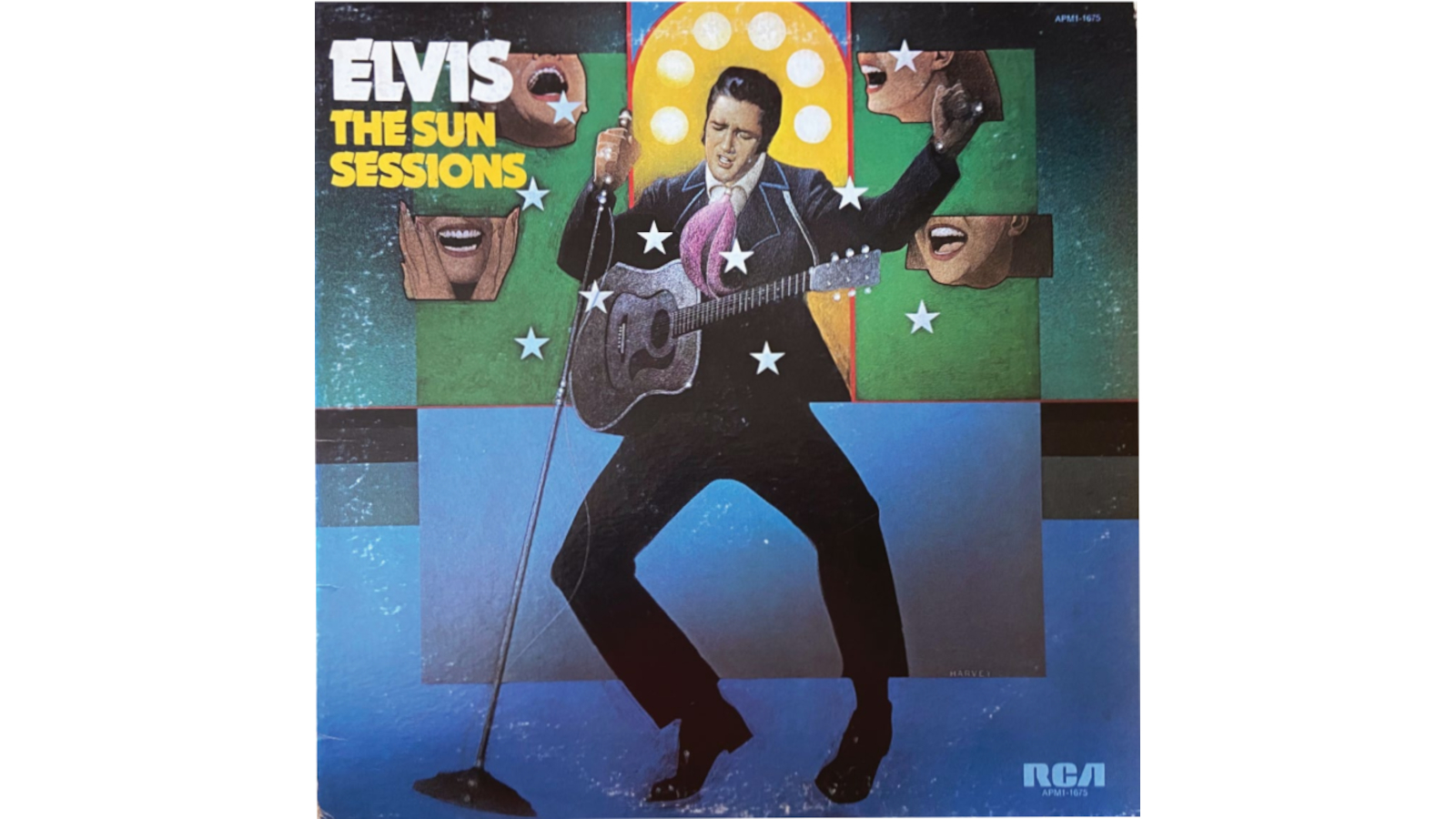This Essential Album Is an Encyclopedic Source for How to Play Rockabilly Guitar
Elvis Presley’s ‘Sun Sessions’ is the sound of rockabilly’s accidental birth

Every morning, I get a croissant at the bakery a few doors down from where I live. It’s a nice way to start the day. With a 7 a.m. opening, some mornings I wait for the croissants to come out of the oven, and on these mornings the wait is filled with small talk.
One of the bakers is a huge guy, kind of a John Candy type. One morning, I asked what his name was.
He told me, “My name is Elvis.”
I was strangely uncomfortable with his answer and started talking. I told him I dated a woman whose ex was named Elvis.
There is also Elvis Costello (whose real name is Declan McManus), and there was an NFL quarterback named Elvis Grbac.
He looked at me curiously.
I wondered if I was making too big a deal out of his name? Or maybe I just knew more Elvises then he did?
All the latest guitar news, interviews, lessons, reviews, deals and more, direct to your inbox!
Well, kind readers, there are a bunch of Elvis Presleys. There’s rockabilly Elvis, Memphis Elvis, bad movie Elvis, leather-clad comeback Elvis, narco agent Elvis (partnered with Richard Nixon) and rhinestone-jumpsuit bloated Vegas Elvis, to name a few.
Personally, my favorite Elvis is found on Elvis Presley: The Sun Sessions, where a pre-Army, pre-Colonel Tom Parker Elvis is young, uncorrupted and adopting long hair and sideburns to get a “truck driver” look.
Cool.
On these recordings he curates his favorite songs, colorblind to the racial source during an era where racism was a blatant part of everyday life.
Elvis sang the songs he loved, with bassist Bill Black and guitarist Scotty Moore as the supporting cast. Both sidemen were playing a style that placed them in uncharted musical territory.
Scotty, on his Gibson ES-295, inadvertently created an iconic rockabilly electric guitar style
Reportedly, Bill Black didn’t care for the music of Elvis Presley, and Scotty Moore said he was navigating the unfamiliar musical terrain by combining the styles of Les Paul and Chet Atkins.
By doing so, Scotty, on his Gibson ES-295, inadvertently created an iconic rockabilly electric guitar style. All of this is evident on Elvis Presley: The Sun Sessions, a compilation of tracks recorded at Sun Studios from 1954 to 1956 and released on RCA in 1976.
This LP is filled with classic recordings such as “That’s All Right (Mama),” “Good Rockin’ Tonight,” “Baby Let’s Play House,” “Mystery Train” and other fantastic performances that formed the DNA of rock and rockabilly.
The impromptu nature of these recordings gives them a time capsule feel
The impromptu nature of these recordings gives them a time capsule feel, where one hears the excitement of discovery among the players.
On some cuts, the songs don’t end – they just suddenly stop.
“Blue Moon” is redefined from Bill Monroe’s melodic appreciation of life to Elvis’s urgent declaration of experiencing now.
My personal favorite track, “I’m Left, You’re Right, She’s Gone,” was the first song I learned to play in this style, and the triadic solo is something I still incorporate to this day.
Elvis’s driving acoustic guitar playing can’t be underestimated
This LP is an encyclopedic source for how to play rockabilly guitar, and Elvis’s driving acoustic guitar playing can’t be underestimated. I can’t imagine “That’s All Right (Mama)” without his driving, somewhat off-beat rhythm playing.
Do I further need to describe tracks we hear almost everyday, at the supermarket and in-between innings at baseball games? Probably not, but if you’re looking for a great rock and roll record with monumental performances, one can’t go wrong with The Sun Sessions.
Sure, there have been a lot of Elvis Presleys. They run the gamut from terrific to off-putting, but regardless of where I’ve stood, I always return to The Sun Sessions.
This is a great LP that I’ve embraced as a source of inspiration, style and brilliance.
But I wouldn’t want my name to be Elvis.

Jim Campilongo has 14 critically acclaimed instrumental records available on vinyl, CD and digital download here.
Jim Campilongo has 14 critically acclaimed instrumental records available on vinyl, CD and digital download here.
